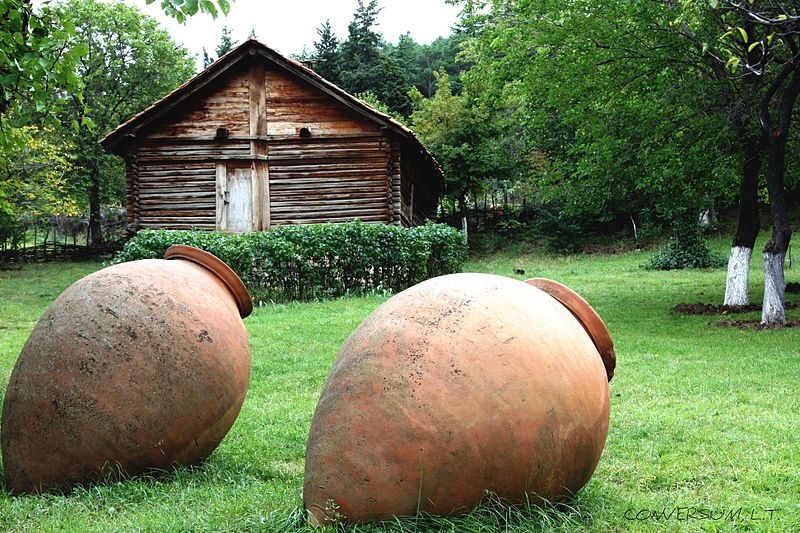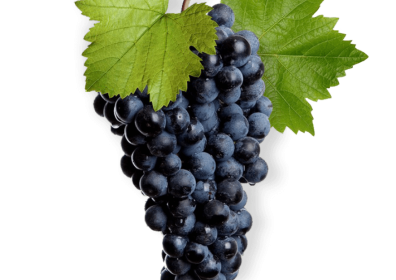Eight thousand years ago, people in Georgia began making wine in Qvevri, and this tradition has endured to this day. New York Times journalist Alice Feiring writes: “For hard-core wine purists, a pilgrimage must be made to eastern Georgia, where they still use a 8,000-year-old technology called qvevri. There, wine is aged in huge, beeswax-lined, turret-shaped clay pots that are buried in soil.” In 2013, the traditional Georgian method of jug (qvevri) wine making was given the status of an intangible cultural heritage site of UNESCO, which signifies the uniqueness of this method and is an indication to the whole world, that wine is part of ancient Georgian culture. This recognition is essential for raising awareness of qvevri wines and will contribute to the promotion of Georgian wines around the world. Qvevri, also known as churi, is a large unique clay vessel used for the fermentation, storage, and aging of traditional Georgian wine. Resembling large, egg-shaped amphorae without handles, it is either buried below ground or set into the floors of extensive wine cellars. Qvevris vary in sizes: volumes range from 20 liters to around 10,000 L; 800 L is more typical. The process of making wine in qvevri involves crashing, pressing the grapes, and then pouring the juice, grape skins, stalks and pips into the qvevri, which is sealed afterwards. The juice is subsequently left to ferment into wine for at least five to six months before being decanted and bottled. The temperature inside the jug does not change and keeps constant at 13 °C- 15 °C. Natural wine made in qvevri has unique natural properties, an airy bouquet, a delicate taste that lasts a long time and, more importantly, has excellent healing properties. Qvevri wine is expected to diversify the monotonous modern market. These ancient wine jugs are currently the subject of research by many scientists, who believe that they are the best quality wine. Foreign winemakers are gradually giving the qvevri a stable place in their wine cellars. Suppliers are increasing an export of natural jug wines from Georgia.
საქართველოში ქვევრში ღვინის დაყენება 8 ათასი წლის წინ დაიწყეს და ამ ტრადიციას დღემდე ინარჩუნებენ. ქვევრის ღვინის დაყენების ქართულ ტრადიციულ მეთოდს 2013 წელს იუნესკოს არამატერიალური კულტურული მემკვიდრეობის ძეგლის სტატუსი მიენიჭა, რაც ამ მეთოდის უნიკალურობაზე მიუთითებს და გზავნილია მთელი მსოფლიოსთვის, რომ ღვინო უძველესი ქართული კულტურის შემადგენელი ნაწილია. მიწაში ჩაფლულ ქვევრში ტემპერატურა არ იცვლება და ის მუდმივად ღვინის დუღილისათვის საჭირო 13°-15°-ს ინარჩუნებს. ქვევრში დამზადებულ ნატურალურ ღვინოს აქვს უნიკალური ბუნებრივი თვისებები, ჰაეროვანი ბუკეტი, ნაზი გემო, რომელიც დიდხანს გრძელდება და, რაც მთავარია, შესანიშნავი სამკურნალო თვისებები. ქვევრის ღვინო შეცვლის თანამედროვე სასმელების ერთფეროვანი ბაზარს.
В Грузии производство вина в Квеври было начато 8 тысяч лет назад, и эта традиция сохранилась до сих пор. В 2013 году традиционному грузинскому методу кувшинного вина был присвоен статус объекта нематериального культурного наследия ЮНЕСКО, что указывает на уникальность этого метода и является для всего мира сигналом того, что виноделие является неотъемлемой частью древней грузинской культуры. Квеври – это большие глиняные кувшины, зарытые в землю и используемые для брожения, ферментации и хранения вина. Температура внутри кувшина не меняется, она постоянна на уровне 13 ° -15 °. Натуральное вино, произведенное в Квеври, обладает уникальными природными свойствами, воздушным букетом, длительно сохраняющимся нежным вкусом, а главное, отличными целебными свойствами. Вино квеври заменит однообразный рынок современных алкогольных напитков.



